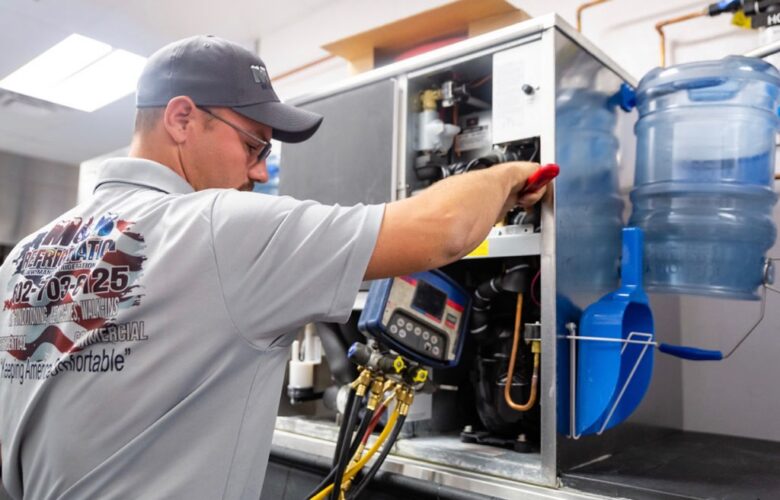Introduction
Tables, desks, and chairs are some of the most used furniture at your home and workplace. That’s why it’s easy to get them scratched or damaged. If there is major damage with the finish coming off, or one of the legs give out, then you have to rely on professionals by searching for “furniture repair near me”. However, minor scratches can be fixed at home with some DIY methods. Let’s check them out:
The Details
- Vinegar – White vinegar is mostly made of water with a bit of acetic acid. This makes vinegar the perfect household cleaner and scratch remover. When acetic acid is rubbed on the scratches it works around the existing finish to fill it up and gives you a flawless result.
However, you need to mix the vinegar with olive oil to reduce its strength. Even mildly strong vinegar has 5 percent acetic acid and that can damage the finish. Olive oil is the choice of oil here since it soaks into the exposed wood and helps you achieve a dark color that matches the finish. Olive oil also acts as a layer of protection against moisture damage and since it’s edible, you can use it to fix wooden cutting boards or other surfaces you eat from.
Before you start using the solution, you must test it out on a hidden part of the furniture. Let it soak for an hour. This will let you know if the vinegar is strong enough to damage the finish. If it’s too strong you can add more oil to the solution and adjust the strength.
Once you’re sure about the strength of the solution, mix two parts of olive oil with one part of vinegar. Mix well till the solution coagulates properly with no oil bubbles floating around.
Soak a soft cotton rag with the solution and squeeze out excess liquid. Rub the soaked rag on the scratched area with circular motions and finish off by going along with the grain. Let the solution soak on the wood surface for a few minutes so that the scratches get filled and wipe off any residue with a fresh and dry rag.
Keep repeating these steps till the scratches get removed. If scratches don’t get removed, you may try the other methods mentioned below.
- Sandpaper – Light and surface scratches can also be removed with sandpaper. However, make sure that the grit is relatively high, and you sand in the direction of the grain. A high grit gives you a finer sanding block or sanding sponge and the scratches blend in with the natural grain when you go along it.
Start with a 180-grit sandpaper to remove the scratches and finish it off with a 240-grit sandpaper to minimize and blend in scratches left by the 180-grit paper. However, for deeper scratches, you need to use sandpaper with a lower grit. Something around 120 or 90.
It’s also important to take things gradually. For instance, you can’t jump to a 240-grit sandpaper from a 90-grit sandpaper. You have to move up gradually so that the scratches blend in and the natural grain stands out at the end.
Once you’re done sanding, you can clean the wood dust from the dining table and give it a good wipe with a clean rag. When you’ve made sure that there is no residual dust, you can refinish the wood with oil or wax. Remember that the sandpaper method isn’t recommended for very light scratches.
- Crayons – The potency of crayons for removing scratches may surprise you, but it works. You can even use it for slightly deeper scratches that can’t be fixed with vinegar. Crayon has certain waxes that are made to strengthen the crayons and help to hold their structural integrity. Once they fill in the scratches, they will become solid like the rest of the wood piece.
Moreover, they come in all sorts of colors and shades. A box of crayons lets you mix and match things to find the perfect shade that matches the finish of the furniture. For instance, for a natural wood finish, you may find the “bisque” color for the crayon to be a close match. On the other hand, dark wood tables may be the perfect match for the “earth tone” color while medium brown finishes may match the “golden beige color”.
Moreover, crayons are mostly manufactured for children and hence are food safe since children like to put them in their mouths all the time. Since the crayons are non-toxic, using them for fixing scratches on the dining table or cutting board won’t pose any health risks.
Before you use the crayons, clean the table thoroughly to get rid of any dust or dirt, especially near the scratch area. Get the perfect crayon and rub it over the scratched area till it’s full of wax. You can then scrape off any excess crayon with a credit card and buff the wax with a fresh cotton rag.
- Other scratch removing agents – Apart from crayon and vinegar, other household items also let you remove scratches from wood furniture. For instance, you can mix warm water to make a rubbing paste out of instant coffee or black tea and rub it on the scratches. If the wood has a very dark stain or finish, you can also use shoe polish and rub it on the scratched area to fill it in.
Conclusion
Now that you know about the different easy methods of removing scratches from your furniture, you should get to restoring the pristine look of your chair or table. However, if the scratches are too deep into the wood or the furniture has severe damage, it’s best to leave it to the professionals. They have years of experience and have all the right tools to get the job done quickly and efficiently. You can easily find a reputable furniture repair company by searching for “furniture repair near me” on the internet.




